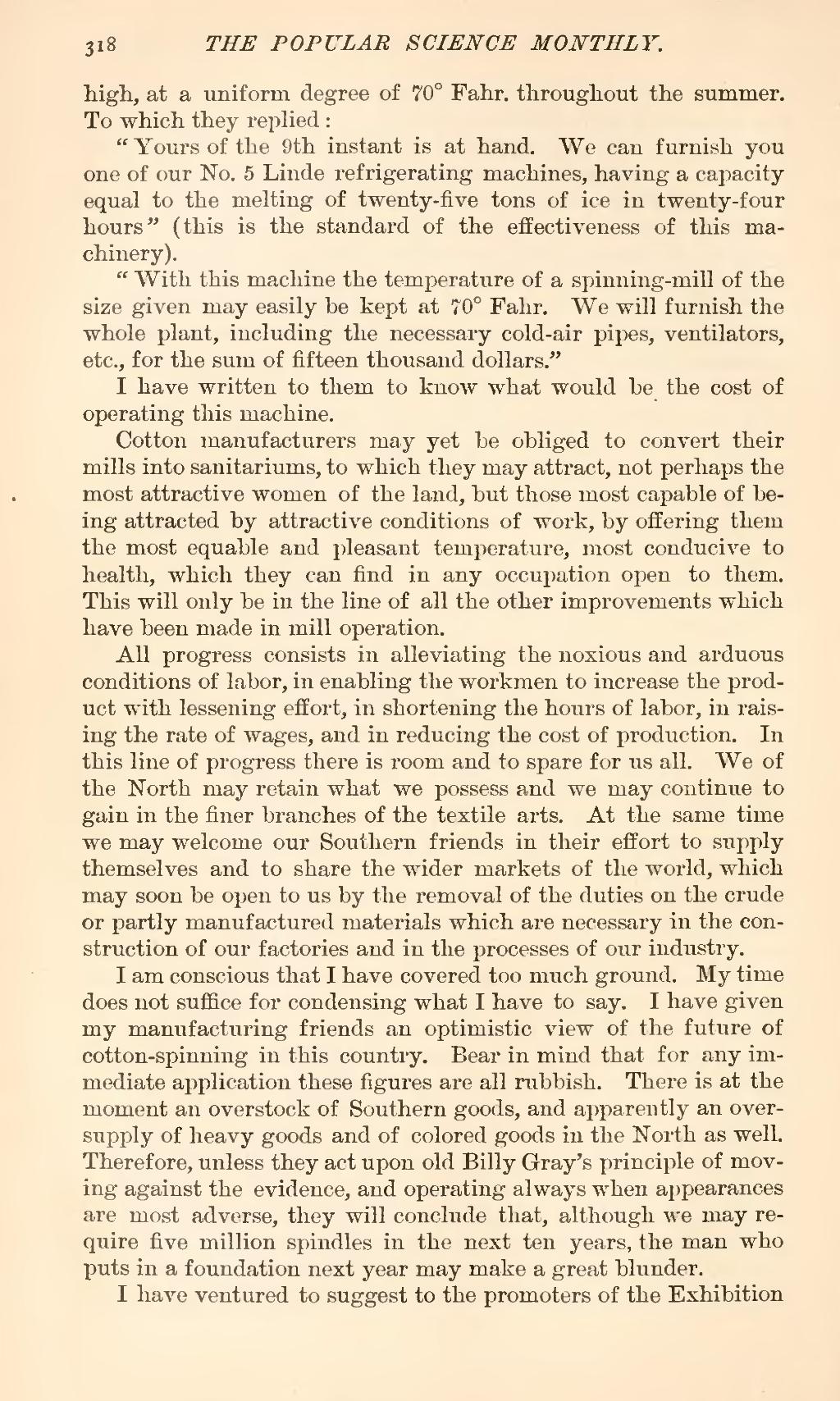high, at a uniform degree of 70° Fahr. throughout the summer. To which they replied:
"Yours of the 9th instant is at hand. We can furnish you one of our No. 5 Linde refrigerating machines, having a capacity equal to the melting of twenty-five tons of ice in twenty-four hours" (this is the standard of the effectiveness of this machinery).
"With this machine the temperature of a spinning-mill of the size given may easily be kept at 70° Fahr. We will furnish the whole plant, including the necessary cold-air pipes, ventilators, etc., for the sum of fifteen thousand dollars."
I have written to them to know what would be the cost of operating this machine.
Cotton manufacturers may yet be obliged to convert their mills into sanitariums, to which they may attract, not perhaps the most attractive women of the land, but those most capable of being attracted by attractive conditions of work, by offering them the most equable and pleasant temperature, most conducive to health, which they can find in any occupation open to them. This will only be in the line of all the other improvements which have been made in mill operation.
All progress consists in alleviating the noxious and arduous conditions of labor, in enabling the workmen to increase the product with lessening effort, in shortening the hours of labor, in raising the rate of wages, and in reducing the cost of production. In this line of progress there is room and to spare for us all. We of the North may retain what we possess and we may continue to gain in the finer branches of the textile arts. At the same time we may welcome our Southern friends in their effort to supply themselves and to share the wider markets of the world, which may soon be open to us by the removal of the duties on the crude or partly manufactured materials which are necessary in the construction of our factories and in the processes of our industry.
I am conscious that I have covered too much ground. My time does not suffice for condensing what I have to say. I have given my manufacturing friends an optimistic view of the future of cotton-spinning in this country. Bear in mind that for any immediate application these figures are all rubbish. There is at the moment an overstock of Southern goods, and apparently an oversupply of heavy goods and of colored goods in the North as well. Therefore, unless they act upon old Billy Gray's principle of moving against the evidence, and operating always when appearances are most adverse, they will conclude that, although we may require five million spindles in the next ten years, the man who puts in a foundation next year may make a great blunder.
I have ventured to suggest to the promoters of the Exhibition

